Tag Archive for: foraging
-
- Sweet Chestnuts (Castanea sativa)
Sweet chestnuts are autumn’s treat, look for spiky green cases on the woodland floor. Crack them open for glossy brown nuts, perfect for roasting or adding to seasonal dishes. They’re a bit fiddly, but totally worth it!
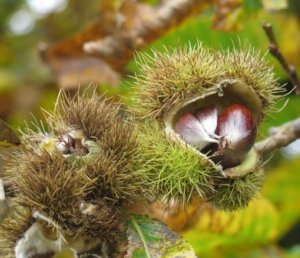
-
Penny Buns (Boletus edulis)
Penny Bun (Boletus edulis). The penny bun, aka porcini, is the king of wild mushrooms, popping up in beech and oak woods after rain. With a fat white stem and brown cap, it’s easy to spot. Fry in butter or add to risotto for a real wild flavour.

-
Hen of the Woods (Grifola frondosa)
Hen of the Woods (Grifola frondosa) Hen of the woods, aka Maitake, grows in big, ruffled clusters at the base of old oaks. It’s firm, tasty, and soaks up flavours, great in stir-fries or simply roasted. Once you find one, check the same spot next year!
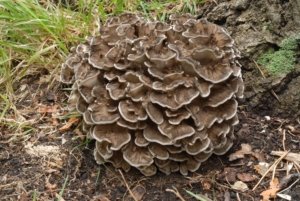
- Sweet Chestnuts (Castanea sativa)
What will you be on the forage for this month?
-
- Hazelnuts (Corylus avellana)
First up is hazelnuts (Corylus avellana). So much sweeter and more than their shop-bought equivalent, not to mention free! Can you believe that at the time of writing they cost over £20 a kilo, but if you get there before the squirrels they’re absolutely free!
You can eat them raw from the tree or roast them for an intense chocolatey flavour.
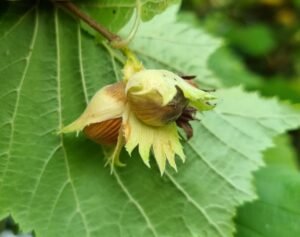
-
Elderberries (Sambucus nigra)
Late in August you’ll find these delicious little bombs of flavour and medicinal goodness dripping from Elder trees.
Wait for them to ripen to almost black, and cook thoroughly to make jams, sauces, wines and desserts.
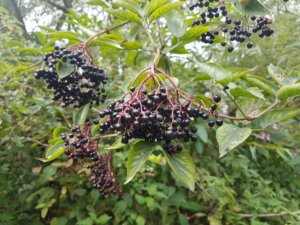
-
Crab apple (Malus sylvestris)
This wild ancestors of the apples that we all know and love, can sometimes have a challenging sour flavour but even so make excellent crisps and replacements for cooking apples. They can also be added anywhere pectin is needed, such as jellies, jams, and fruit leather.
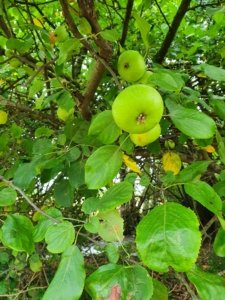
- Hazelnuts (Corylus avellana)
What will you be on the forage for this month?
-
- Elderflower (Sambucus nigra)
Elderflowers are in full bloom in June and are easy to spot with their creamy white, fragrant clusters. They’re fantastic for making cordials, syrups, and even elderflower fritters.
Foraging tip: Only take a few heads from each tree to leave plenty for wildlife and later fruiting.

-
Wild Strawberries (Fragaria vesca)
These tiny, sweet berries start ripening in June and can often be found on grassy banks, woodland edges, and hedgerows. They pack a ton of flavour for their size!
Foraging tip: Look for the classic three-leaf clusters and tiny red fruits close to the ground.
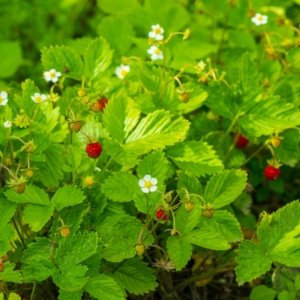
-
Mugwort (Artemisia vulgaris)
You’ll spot mugwort growing along hedge banks, roadsides, and on waste ground throughout the UK in early summer. It’s a tall perennial with deeply divided, dark green leaves that are silvery underneath, and it starts to flower from mid-June.Foraging tip: Always double-check your ID, as mugwort can be confused with other Artemisia species. Avoid if pregnant, and as with all wild plants, only eat after positive identification.
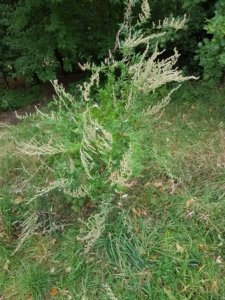
- Elderflower (Sambucus nigra)
What will you be on the forage for this month?
-
First up is Alexanders (Smyrnium olusatrum). The stems are nice and chunky in May, hollow and grooved on the outside. They smell and taste like a floral version of celery and I’ll be eating them with salad cream and chopping them into stews.
-
I found out recently that if you cut the stems into 5mm slices and fry until crispy, they are absolutely delicious!

Alexanders in flower
- Crow garlic (Allium vineale) has been around for a while, but its green stems are hard to spot in the meadows where it likes to grow. The red flowers/seed heads make it much easier to find and I’ll be using it as a garlicky substitute for chives.

Crow garlic
-
Like crow garlic, Pignuts (Conopodium majus) is pretty tough to find before it flowers and that’s the best time to pick it. However, I found that they’re still good whilst flowering. Don’t forget to get the landowner’s permission before digging up these tasty tubers.

Pignut leaves
What will you be on the forage for this month?
-
First up is Ground Elder leaves (Aegopodium podagraria). Its primary common name comes from the fact that it grows low to the ground, and the leaves look a little like Elder tree leaves (although the two are not related).
It has a strong “herby” smell, so I use it in salads, as a garnish for chicken and fish, and to flavour mashed potato.
Look out for a Wednesday Weed Waffle coming soon.
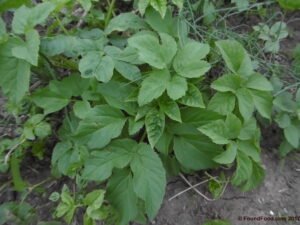
Ground elder
-
Garlic Mustard leaves (Alliaria petiolata) likes hedgerows and woodland edges, favouring partial shade.
In early spring I’ll be eating the leaves raw, later on I’ll be using the leaves as a last-minute flavour such as stirring them into pasta or potatoes just before serving.
In the later summer I’ll be looking out for the tasty, pungent seeds!
You can find the Wednesday Weed Waffle recordings and accompanying eBook about Garlic Mustard here

Garlic Mustard leaf
-
St. George’s mushrooms (Calocybe gambosa). Until fairly recently I overlooked them as the smell was a little off-putting for me. What a mistake to make! Cooked, these mushrooms are absolutely delicious and widely regarded as a delicacy in Europe.
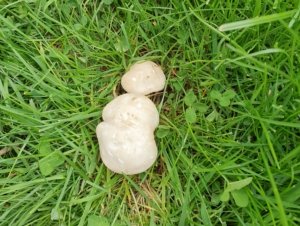
St. George’s mushrooms
What will you be on the forage for this month?
First up is Hawthorn leaves (Crataegus monogyna). The leaves appear in early spring and have a distinctive, lobed shape. I’ll be eating the leaves raw in salads, and as a snack straight from the tree. My favourite use for them is to flash fry them in hot oil (10 seconds max) and sprinkle with sea salt for a nutty, leaf crisp.
You can find a video recording of the Hawthorn Wednesday Weed Waffle here, also included are an audio recording and an accompanying eBook.
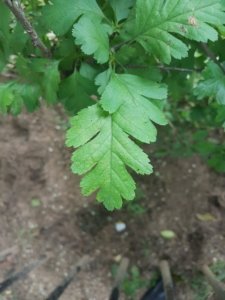
Stinging nettles (Urtica dioica) grow just about anywhere but they particularly like waste ground and road side verges. I could literally fill a day with talking about nettles, but my favourite use for them in spring time is to make cordial for refreshing cold drinks and warming hot drinks.
You can find a video recording of the Stinging Nettle Wednesday Weed Waffle here, also included are an audio recording and an accompanying eBook.
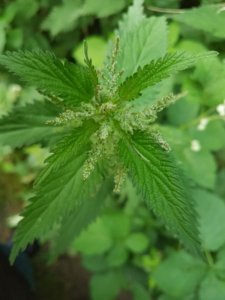
Wild garlic (Allium ursinum). I can’t talk about spring without mentioning wild garlic. Although nasties grow alongside it, there’s nothing that looks like it and smells of garlic so you can’t really go wrong. Much like everyone else, my favourite use is to make cheese and wild garlic scones.
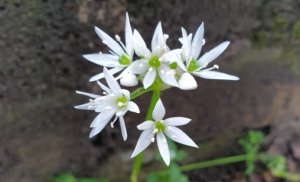
Chickweed is nutrient and medicinal component rich, and grows just about everywhere, and in large quantities. It tastes like a mild rocket leaf raw, and is so freely available that it’s a surprise that we don’t use it more.
Habitat
Stellaria media is widespread in North America, Europe and Asia. A cool-season annual plant native to Europe, but naturalized in many parts of North America.
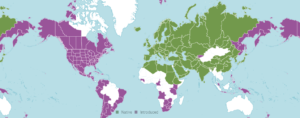
Description
The plants are annual and with weak slender stems, they reach a length up to 40 cm, and can form mounds 50 cm high on rich soil. Sparsely hairy, with hairs in a line along the stem. Very common in lawns, meadows, waste places and open areas. It likes growing in disturbed soil and can produce new plants from seed several times a year.

Etymology
The name Stellaria is derived from the word ‘stellar’ meaning ‘star’, which is a reference to the shape of its flowers. Media is derived from Latin and means ‘between’, ‘intermediate’, or ‘mid-sized’.
Identifying Features
- Hairs – Stellaria has fine hairs on only one side of the stem in a single band and on the sepals. This like of hairs has been observed to switch sides of the stem when it reaches a leaf axil. Other members of the family Caryophyllaceae which resemble Stellaria have hairs uniformly covering the entire stem.
- Leaves – The leaves are oval and opposite, the lower ones with stalks.
- Flowers – Flowers are white and small with 5 very deeply lobed petals. Usually 3 stamens and 3 styles.
- Seeds – The flowers are followed quickly by the seed pods. This plant flowers and sets seed at the same time.

Food Uses
Stellaria media is edible and nutritious, and is used as a leaf vegetable, often raw in salads. It is one of the ingredients of the symbolic dish consumed in the Japanese spring-time festival, Nanakusa-no-sekku.
- Young leaves – raw or cooked as a potherb. Very nutritious, they can be added to salads whilst the cooked leaves can scarcely be distinguished from spring spinach. I find that they taste like a mild version of rocket, so make an excellent salad leaf (although when young, I throw in the stem and all, not just the leaves).
- Seed – allegedly ground into a powder and used in making bread or to thicken soups; however, it would be very fiddly to harvest any quantity of this seed since it is produced in small quantities throughout most of the year and is very small. The seed contains 17.8% protein and 5.9% fat.
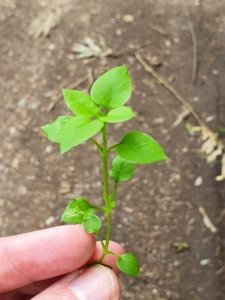
Medicine Uses
Chickweed has a very long history of herbal use, being particularly beneficial in the external treatment of any kind of itching skin condition. It has been known to soothe severe itchiness even where all other remedies have failed.
Harvesting
Young leaves can be available all year round if the winter is not too severe. Seeds may also be available for most of the year.
For medicines, Chickweed is best harvested between May and July, it can be used fresh or be dried and stored for later use.

First up is Dandelions (Taraxacum officinale). They sometimes persist through the winter and are always one of the first to appear in spring. I’ll be the leaves raw in salads, the roots for a flavoursome coffee substitute and when the flowers appear I’ll be making wine.
You can find a video recording of the Dandelions Wednesday Weed Waffle here, also included are an audio recording and an accompanying eBook.

Scarlet Elf Cup fungus (Sarcoscypha coccinea) love to grow on dead wood, particularly silver birch, and in wet conditions. They grow up to 5cm and are deep red. They’re edible raw or cooked, and because of their shape and colour I like to float them in bowls of mushroom and bittercress soup.

Chickweed (Stellaria media) is nutrient and medicinal component rich, and grows just about everywhere, and in large quantities. It tastes like a mild rocket leaf raw, and is so freely available that it’s a surprise that we don’t use it more.

First up is ground ivy (Glechoma hederacea). It persists through the winter and is easily recognisable with its kidney shaped, scalloped edged leaves, and mint-meaty smell. I’ll be using it in stocks, gravies and sauces, as well as to flavour creams in desserts!
You can find a video recording of the Wednesday Weed Waffle zoom call, an audio recording, and an accompanying ebook here: https://courses.foundfood.com/ground_ivy

Hairy bittercress (Cardamine hirsuta) which is neither noticeably hairy, nor bitter, but does taste exactly like cress! Lovely in sandwiches, salads, and of course the classic egg salad.

Judas’ ears fungus (Auricularia auricula-judae) also known as wood ears and jelly ears, and formerly known as Jew’s ears. These mushrooms really stand out at this time of year with their dark skin colour and ear shaped growths. They’re pretty versatile, you can powder them and use as a thickener, or dehydrate them then rehydrate in your favourite syrup or liqueur and dip in chocolate.

Helper Sites
- The Forager Helper
- The Wild Herbalist Helper (coming soon…)









